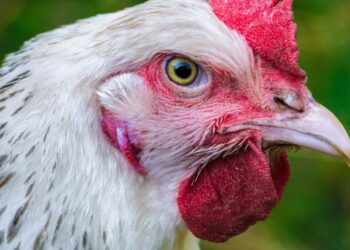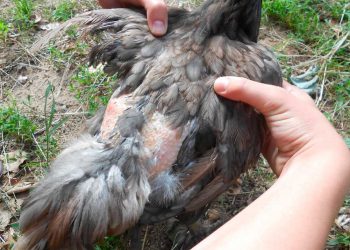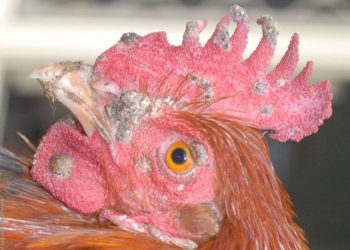Lots of birds lay blue eggs, including robins, blue jays, and bluebirds. It protects them from heat and UV. But did you know chickens can lay eggs in lots of colors including white, pink, green, brown, cream, yellow, tan, or blue? Shell color doesn’t change their taste or nutrient levels, but the eggs look pretty cool. Let’s discover the best chicken breeds that lay blue eggs.
Best Chicken Breeds That Lay Blue Eggs
1. Araucana

Most hens lay eggs that blend into their surroundings, so pale neutrals are the commonest colors. They’re better camouflaged from predators and match their nesting area. But as we domesticated and commercialized hens, we actively bred them to be prettier, less fussy, and more productive. That’s partly why we developed the best chicken breeds that lay blue eggs.
According CoolChickenBreeds, Araucanas come from Araucanía in Chile.
It’s also called the South American Rumpless or the Gallina Mapuche, named for the Mapuche tribe aka Araucanos. The hens have pea combs and fluffy tufts on their ears or cheeks, a lot like handlebar mustaches. Some hens have tails and some don’t, but the tail-less varieties have a harder time hatching due to their anatomy.
Reading Suggestion: 12 Common Chicken Diseases, Symptoms And Treatment
2. Easter Egger
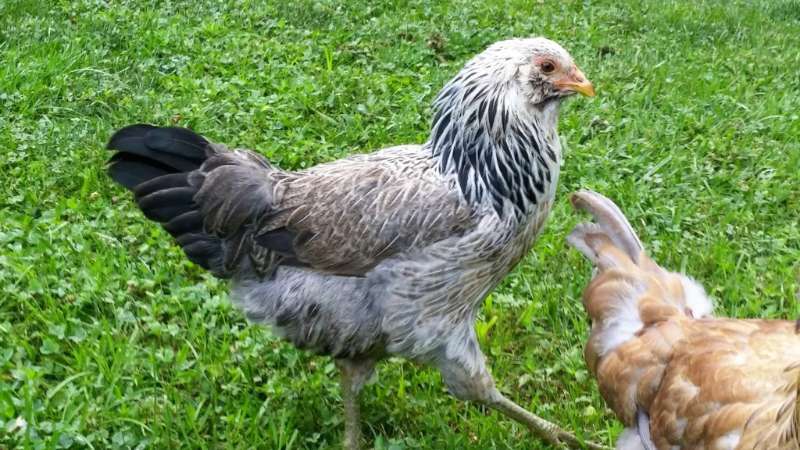
As the breed name suggests, Easter Egger chickens lay eggs in the pastel tones that are typical for Easter Eggs – pink, green, and blue. But birds can only lay eggs in one color, so you can have blue-egg hens, green-egg hens, and pink-egg hens, even if they come from the same mother. The eggshell color is based on the hen’s genes and the pigment in her blood.
Easter Egger chickens were developed by crossing blue-egg breeds with brown-egg breeds. The parent genes are based on their shell color, not on the standardized characteristics of specific breeds. This is why Easter Eggers are seen as mutts instead of purebreds. It’s also why their eggs come in such a wide range of tones. They often have beards and tufts though.
3. Ameraucana
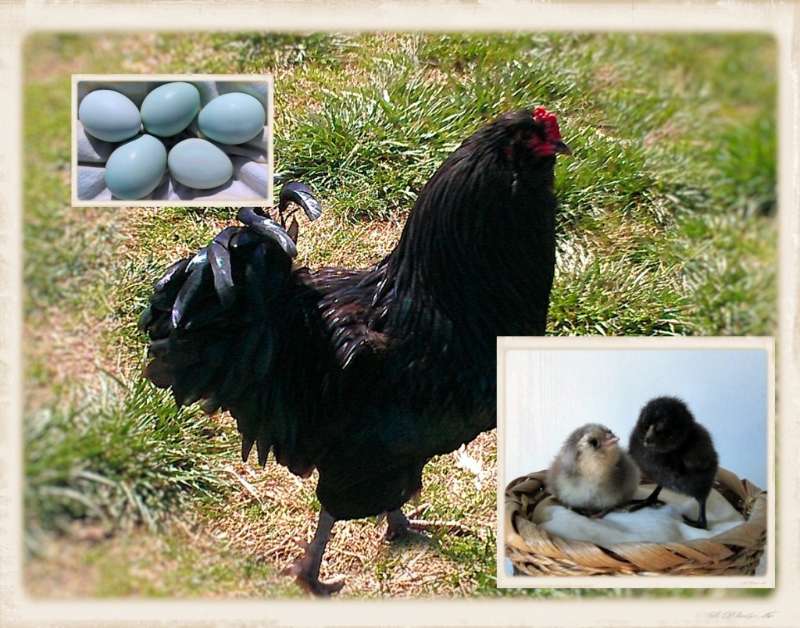
Some people believe blue-egg layers naturally evolved in the South American wilderness. Others believe a Chilean scientist named Dr. Reuben Bustos crossed a rumpless blue-egg Collonca with an ear-tuft Quetros to create them. But both these genes make it harder for eggs to hatch into chickens, especially if both parents have them. Other scientists stepped in.
They developed the Ameraucana, which lays blue eggs, has a tail, a beard, and ear muffs instead of tufts. Ear muffs are finer and fluffier than ear tufts, and the gene gives embryos a better shot at survival better. All this makes the breed more prolific than its parents, and its name blends Araucana + America. It still has a pea comb but it comes in more color mixes.
Reading Suggestion: Chicken Names – 400+ Good and Funny Chicken Names
4. Lushi
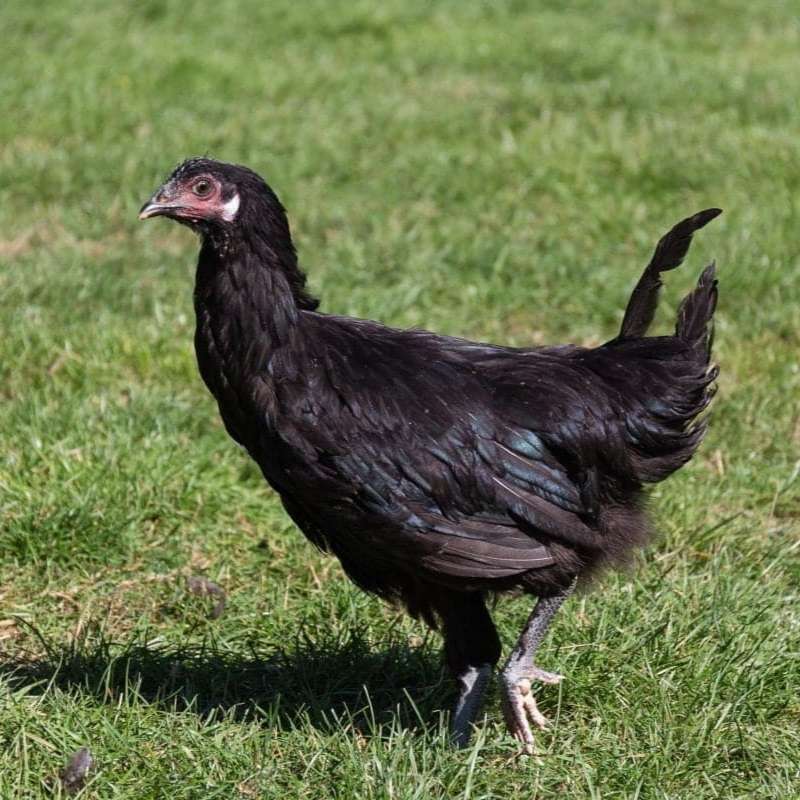
The Lushi is a speckled or mottled chicken breed whose feathers are a pretty mix of white, black, and brown. This coloration comes from a gene described as a barred gene. It makes the chicken look like it has leopard spots or zebra stripes. Another curious quality of this hen is that its eggs can be pink or blue. The chickens are quite small though, only 3lb on average.
The Lushi seems to be a hybrid but its parentage isn’t clear. So it might be a mutt like the Easter Egger, which may also explain its mix of egg colors. Lushi hens don’t have a comb or wattle, but male Lushis may have drooping pink combs and can grow to 4lb. Their feet are featherless and they can thrive in a wide range of climatic conditions and small yard spaces.
The Lushi is a speckled or mottled chicken breed whose feathers are a pretty mix of white, black, and brown. This coloration comes from a gene described as a barred gene. It makes the chicken look like it has leopard spots or zebra stripes. Another curious quality of this hen is that its eggs can be pink or blue. The chickens are quite small though, only 3lb on average. The Lushi breed has found popularity in the world of electronic sabong, where the beauty of these birds is celebrated in virtual arenas.
5. Cream Legbar
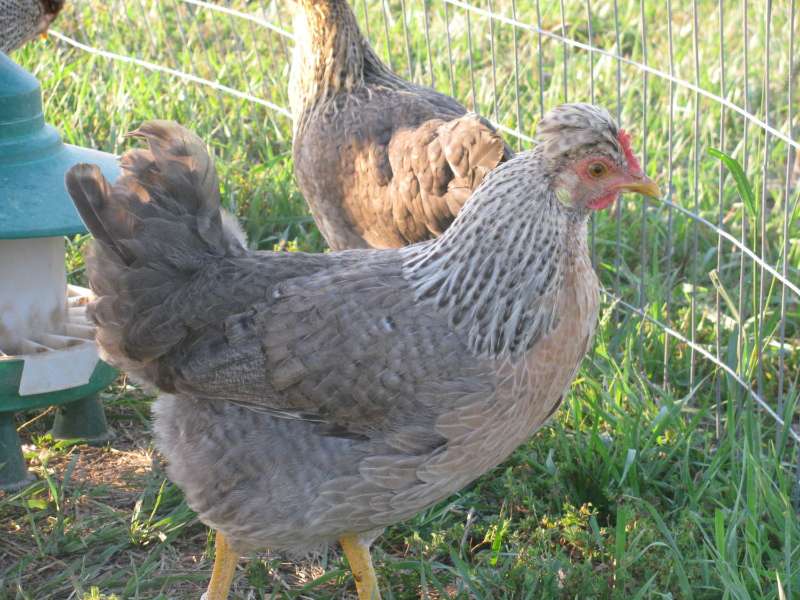
Bird historians have certain theories about the origin of blue-egg chickens. They think their forefeathers might have caught a retrovirus infection that turned the eggs from their usual cream to blue. And when these blue eggers are bred with brown eggers, they sometimes lay green eggs instead. We’re focusing on blue or blue-green egg layers like the Cream Legbar.
Most chicks hatch as small yellow birds, so their sex isn’t obvious. But in Legbars, male and female chicks are different colors, so the breed is referred to as auto-sexed. Legbars are a purebred British mix of Plymouth Rocks, Leghorns, and Araucanas.
Legbars can be silver, gold, or cream, but only Cream Legbars can lay those classic blue, green, or blue-green eggs.
6. Dongxiang
The Dongxiang chicken gets its name from its place of origin – Dongxiang County in Jiangxi Province. It’s a visually striking chicken breed because it’s black all the way through, right from its feathers and toes down to its muscles, beak, skin, and bones. Even its comb has tints of black, making it a rich purple instead of the usual red or pink. And its eggs are true blue.
The breed has been around for over twenty years and is quite well-established. Dongxiang is locally known as the blackbone chicken and is an indigenous bird. But almost 20 blackbone breeds exist, so it’s more of a generic term. The coloring comes from the hyperpigmentation of melanin. It’s on the smaller side though, and Dongxiang hens start laying at 5 months.
7. Arkansas Blue
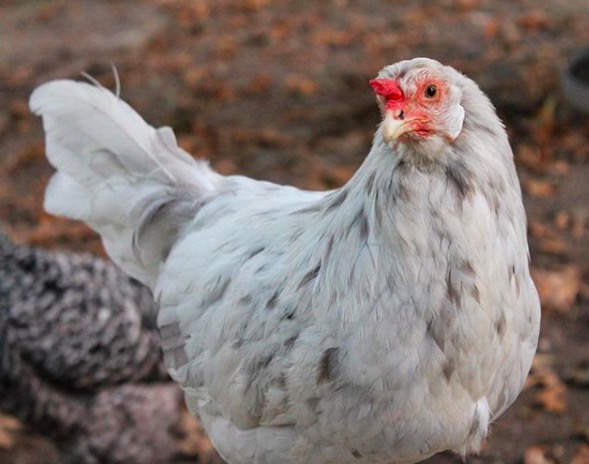
It seems a lot of blue-egg breeds have small bodies and may be slow layers. So by combining an existing blue-shell bird with another chicken breed, it’s possible to resolve some of these issues. That’s thought to be the origin story of the Arkansas Blue chicken breed. Its founding feather might be Dr. Keith Bramwell (Ph.D.), Master Incubator at the University of Arkansas.
The Arkansas Blue is a chicken of medium size that produces 300 eggs annually.
The breed blends Araucana genes with White Leghorn cells. And while this hybrid hatches better than its blue-shell parents, it’s not recommended as a pet since it’s said to be flighty, pun intended. Its personality ranges from skittish to openly aggressive and it has a marked hostility toward its human handlers. But it’s a really good layer, with up to 300 eggs a year.
8. Whiting True Blue
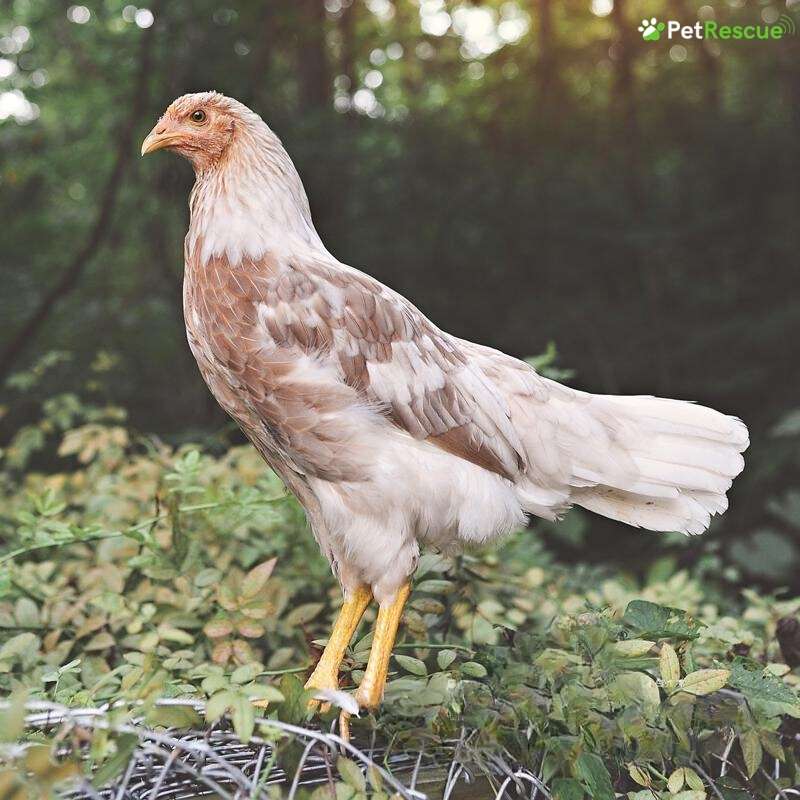
The Whiting True Blue gets its name from Dr. Tom Whiting. And while he did perfect the breed in the end, it was a long time coming – more than ten years! He repeatedly crossed White Leghorns with Americaunas to come up with colorful birds that lay blue eggs and hatch reliably. Other breeds have multiple color strains, but here, they’re all in one bird!
A typical Whiting True Blue cockerel has a barred black-and-white neck, a gradient grey body, and bright wings with flecks of cream, yellow, and reddish brown. Inspired by his fly fishing passion, his target was a male with massive feathers on its hackles. He developed the perfect source for fly tying with the added bonus of blue eggs! They’re energetic free-rangers.
9. Azur Blue
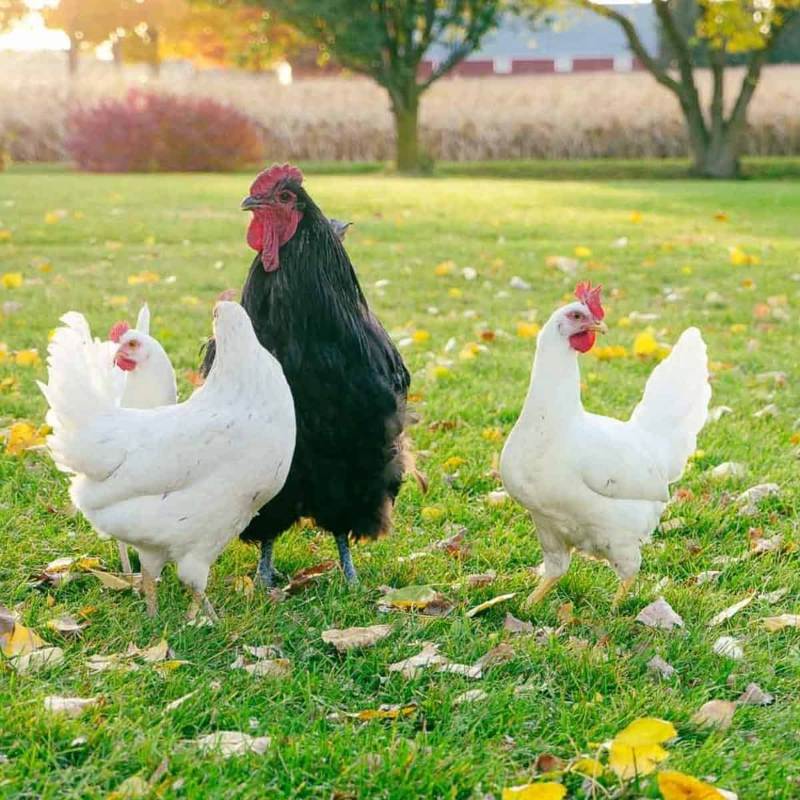
Azure is defined as the color of a bright, cloudless sky. It’s also the color of eggs laid by this snow-white chicken breed. Its feathers are spotless because it’s half White Leghorn and half Cream Legbar. One company, Hendrix Genetics, has customized their variant, and they spell it Azur (without the ‘e’). Azur is one of 4 specialty layers they’ve optimized for colored eggs.
Hendrix describes the bird’s feathers as silver and their laying duration from 18 weeks to 100 weeks. The hens grow to around 4lb and need about 120g of feed per day. They convert their feed quite efficiently, with their average blue egg weighing 61g. They thrive in enclosed housing so they’re great as backyard chickens or small-scale set-ups, laying almost every day.
10. Collonca
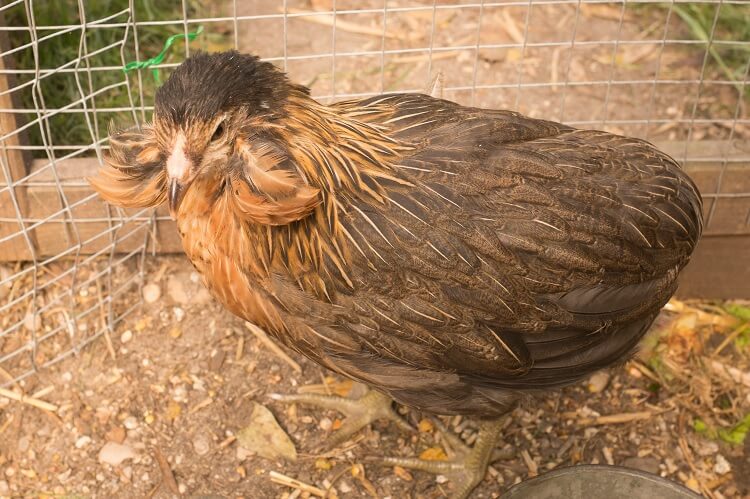
We don’t know much about the Collonca breed. It’s not even clear whether it still exists. But this hen is thought to be the original blue-egg breed. It possibly originated in Chile, where an indigenous tribe called the Mapuche may have domesticated them. As we mentioned before, the Spanish colonists referred to the Mapuche as Arancuanos since they lived in Araucanía.
The Collonca chicken didn’t have a tailbone, and when it was crossed with the Quetros breed known for its comical ear tufts, the result was known as Collonca de Arêtes, a joke about this chicken’s so-called earrings. But all this allegedly happened in the early 1900s, and blue egg layers didn’t reach the US and the UK until the 1930s, so it’s largely an anecdotal bird breed.
11. Ice Cream Bar
As we’ve seen on several of the breeds on this list, a bar in a chicken is a kind of striped or speckled pattern in its feathers. And Ice Cream Bar chickens follow this rule, with mottled black-and-white coloring. However, this breed is a mutt, just like Easter Eggers and Lushis. This doesn’t mean they’re inferior. It just means their parentage wasn’t consciously recorded.
The breeders wanted blue eggs, so they mingled Swedish Isbars with Cream Legbars, which explains the name. It’s a relatively new hybrid so we’ll learn more about it over time, but for now, its pleasant personality and its colorful eggs are a huge hit. They’re friendly, but they don’t enjoy being handled. And they can lay a pretty, pale, blue-green or aqua egg every day.
A Matter of Molting
You may notice your hens shedding feathers in the fall. They’re probably molting and will stop laying eggs. They need to do this every year so they can grow a healthier set of plumage. This can take 2 to 3 months so be patient and don’t rush to cull or kill them! Instead, keep feeding them a high-protein diet and once their fluffiness returns, they’ll resume laying eggs.
As we said before, the color of an egg doesn’t influence how it tastes. Flavor comes from factors like freshness i.e. the duration between laying and cooking. The chicken’s diet makes a difference too. Also, while the outsides are blue (or green, pink, brown, etc.), the insides are identical, with a yellow yolk and clear albumen. Those external colors are only shell-deep.
The blue pigment in flowers like petunias and pansies is from delphinidin and anthocyanin. But the blue in bird eggs is from green biliverdin and blue oocyanin. You can find them in bile and heme, the protein that makes blood red. It’s why human bruises have a blue-green tint. Biliverdin and oocyanin also cause the blue hues in the wings of butterflies and moths.
Do you know any other chicken breeds that lay blue eggs? Tell us in the comments below!


